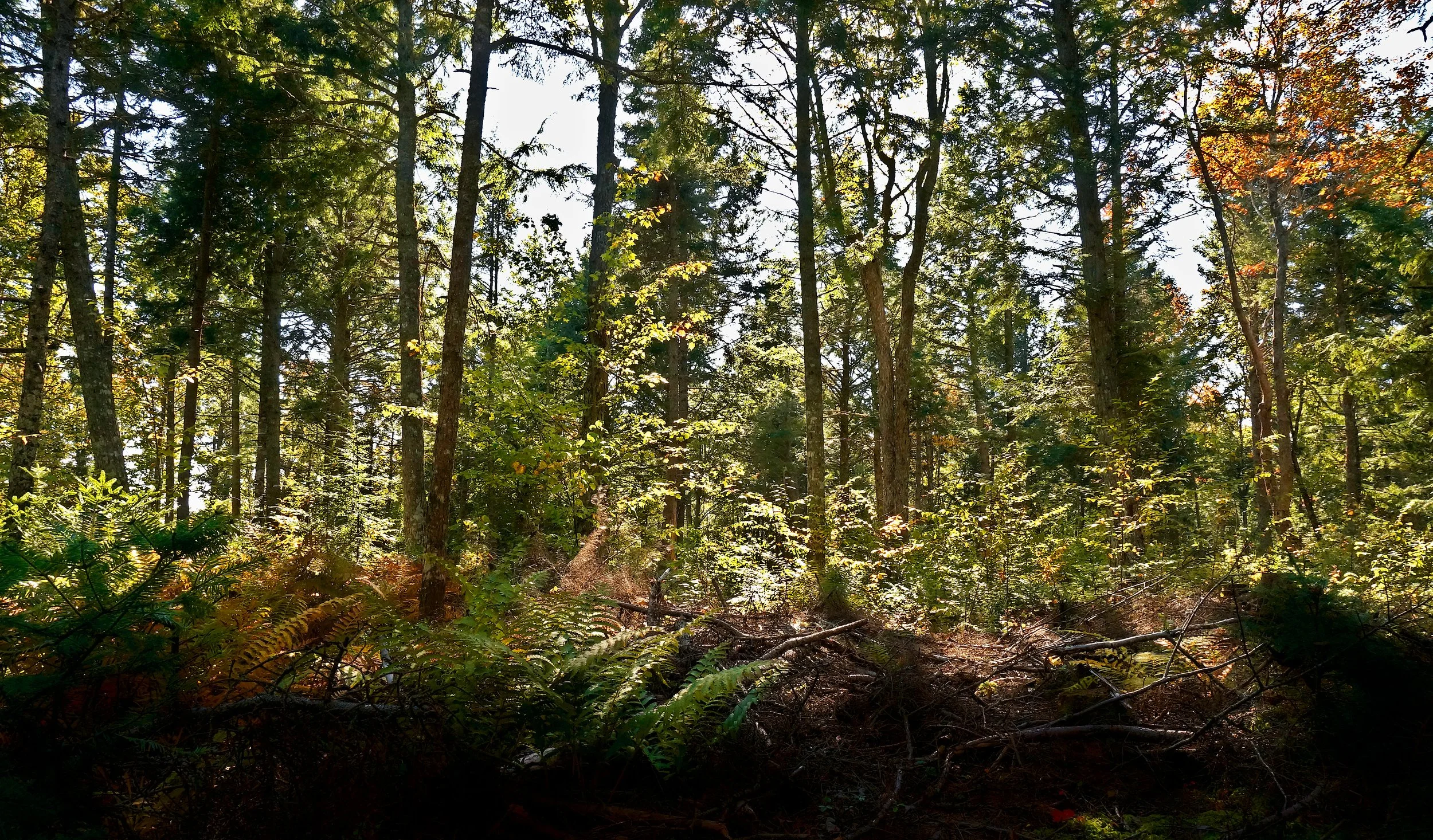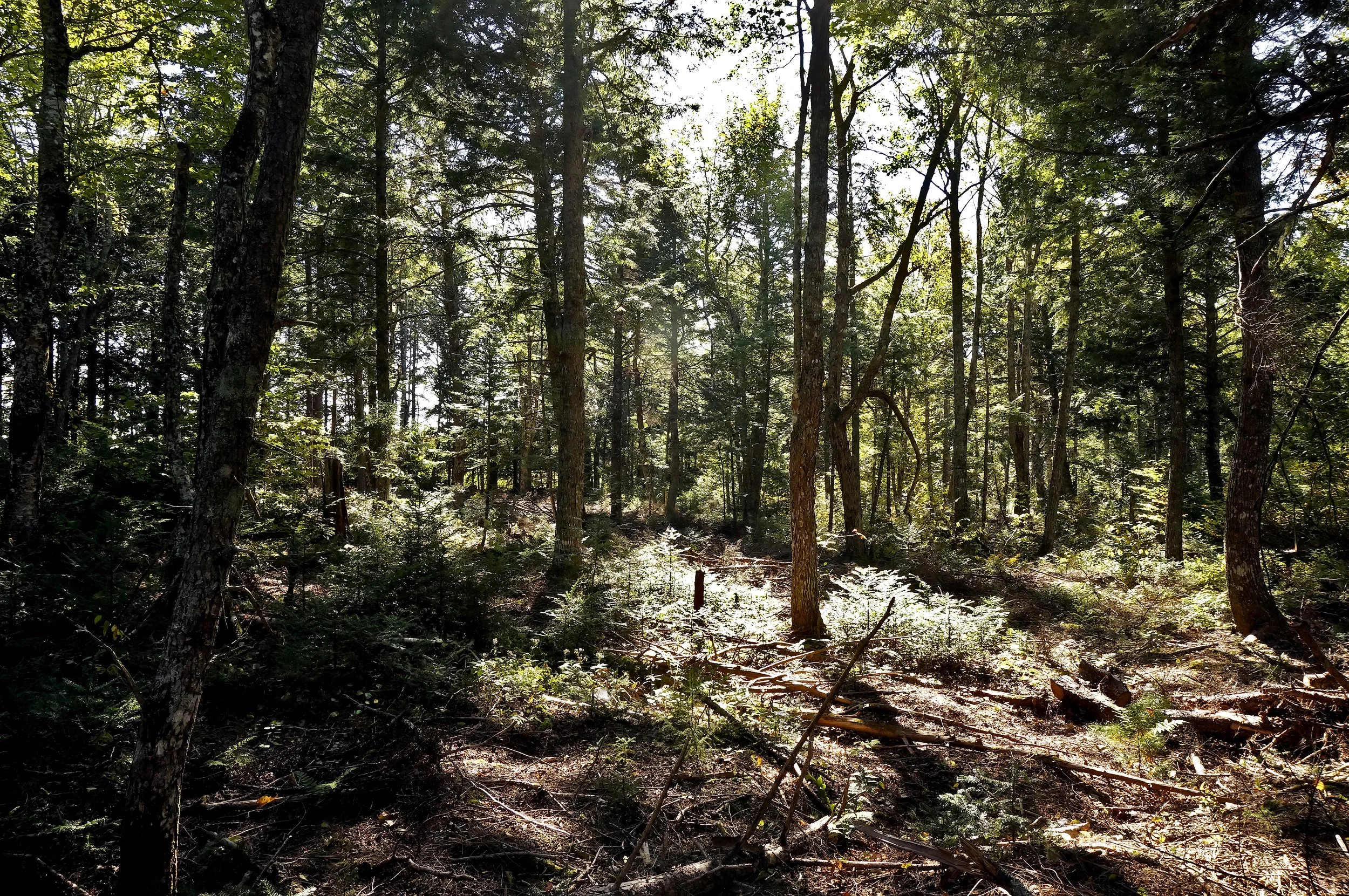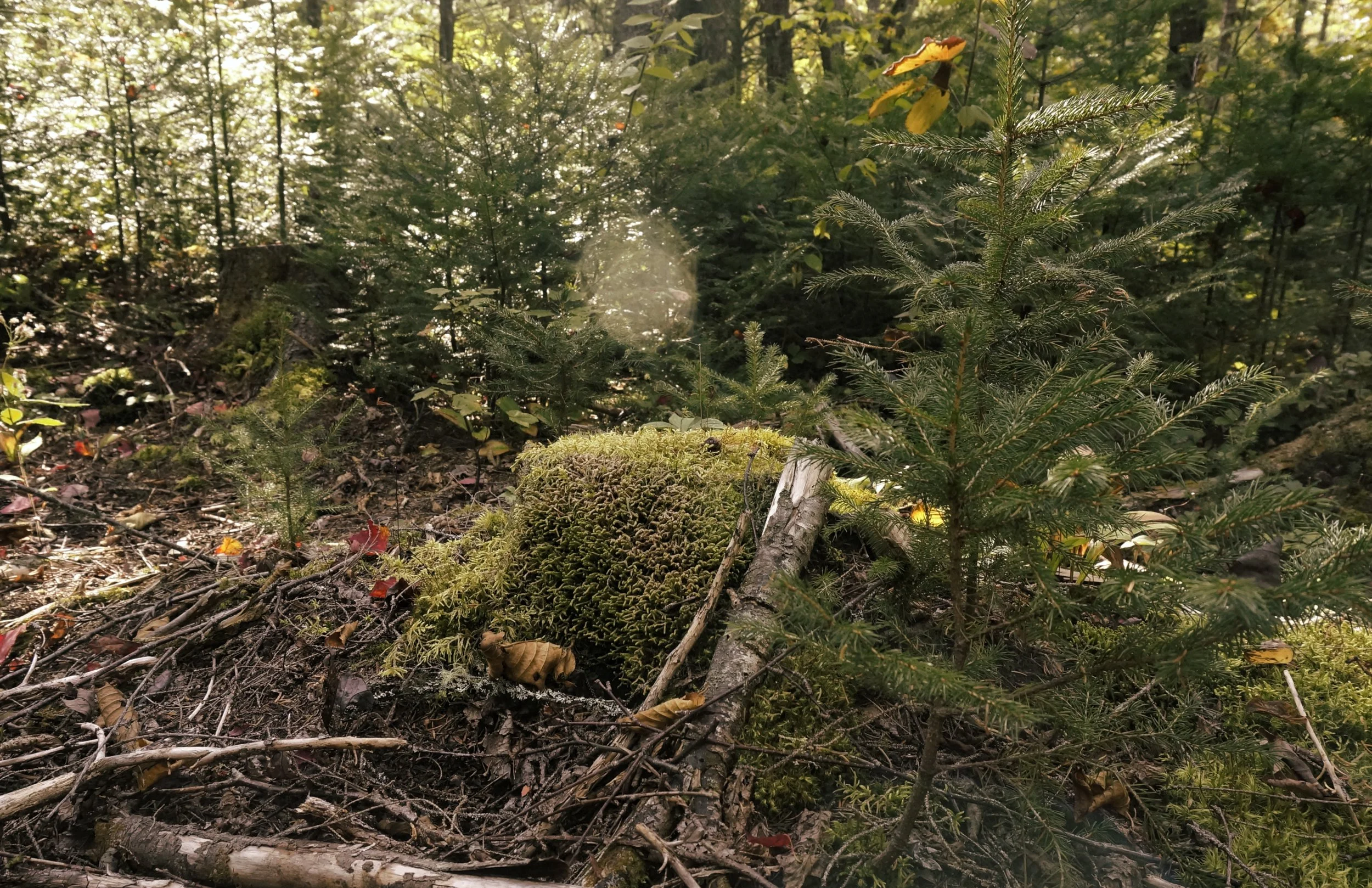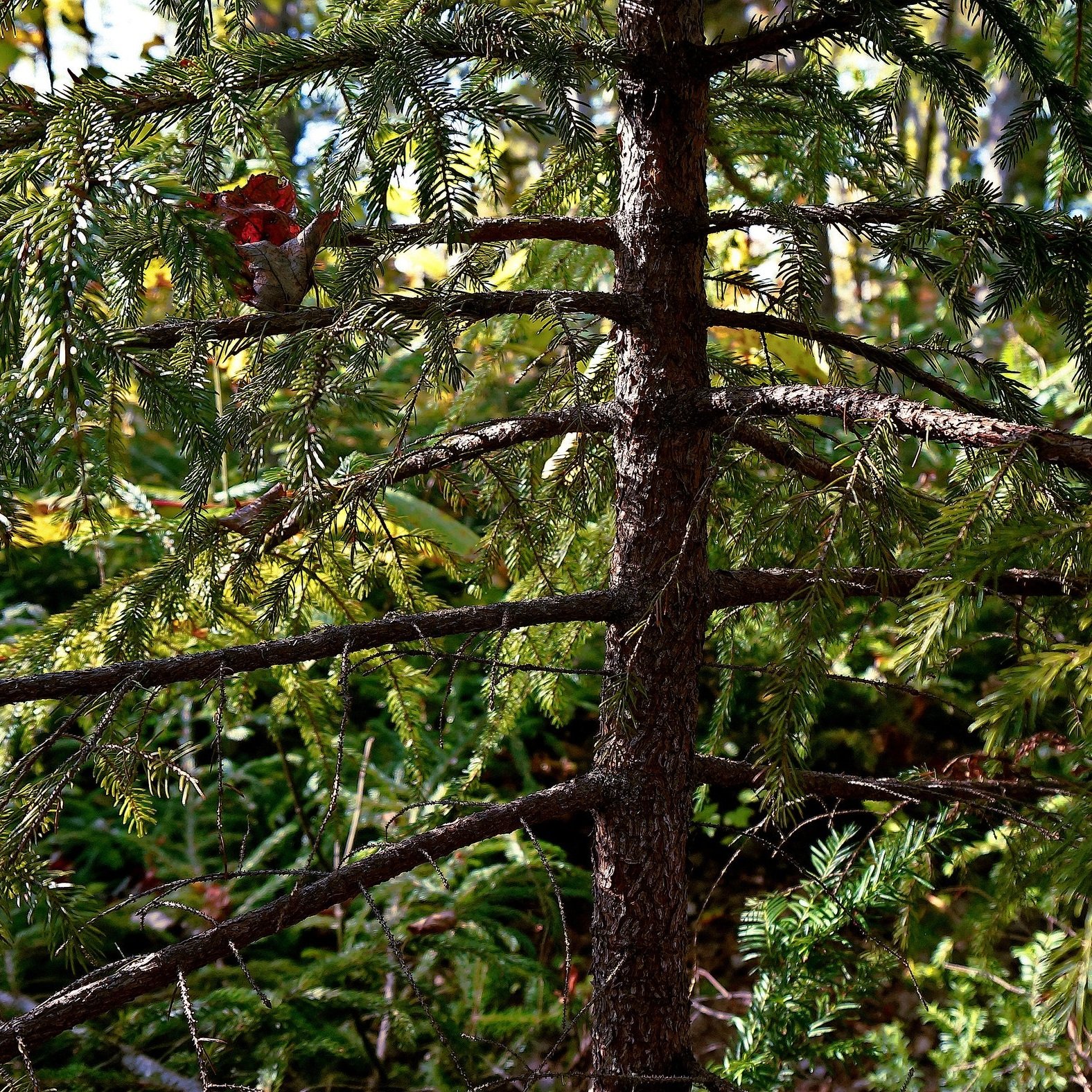
Our Work
Green Horizons:
ACFOR's Forest Revitalization
ACFOR is dedicated to transforming woodlots across Atlantic Canada into healthier, thriving forests. Our expertise in restorative forestry guides woodlot owners through sustainable practices that rejuvenate their land.
We're passionate about creating a legacy of robust woodlands for generations to come, ensuring the prosperity of local ecosystems and communities. Join us in crafting greener futures.
Scotch Settlement
Beginning in 2012, we embarked on a journey to rejuvenate an 80-year-old forest whose dense canopy stifled its own growth. By selectively harvesting 30% of the trees, mainly the short-lived species, we spurred a remarkable growth in the remaining trees, favoring the longer-lived, shade-tolerant varieties like spruce, hemlock, and yellow birch.
This strategic intervention not only enhanced the forest's health and diversity but also allowed for the removal of less vigorous trees, thereby boosting the overall growth rate by increasing light availability. The absence of advanced regeneration in the pre-treatment photos contrasts with the notable growth response captured in subsequent images.
A decade later, in winter 2023, we performed a second selection harvest. This reduced the canopy's density again, allowing sunlight to nurture a new generation of seedlings. Despite the removal of 35% of the basal area, the focus on high-quality timber doubled the landowner's revenue, a testament to ACFOR's precise and thoughtful approach.
Photographs post-harvest show a thriving understory, rich with diverse seedlings—evidence of a forest resilient and revitalized. Our skilled operators, using advanced machinery, ensured minimal impact on the forest floor, promoting a healthy regeneration.
Sainte-Marie-de-Kent Commercial Thinning
Our Sainte Marie Commercial Thinning project offers an insightful look into the impact of forest management strategies. Initially, the project encompassed three neighboring properties, each representing a different stage of forest development. One property remained untreated, characterized by a dense growth of low-vigour balsam fir trees. The lack of treatment led to a closed canopy, with trees struggling for resources and showing minimal growth.
In contrast, the second property underwent Pre-commercial Thinning (PCT), which resulted in a noticeably taller forest with larger trees and a more varied species composition, including red spruce and yellow birch. PCT involved spacing the trees approximately six feet apart, enhancing their access to light and nutrients. This treatment was aimed at increasing volume yield and shifting species composition towards more favorable types, considering factors like market demand and climate change adaptability.
The third property received both PCT and a recent commercial thin. This intervention allowed for the removal of larger stems, primarily balsam fir, for commercial use. The commercial thinning aimed to further increase volume growth and modify species composition. With careful felling techniques and the use of highly maneuverable machinery, ACFOR ensured minimal damage to the existing regeneration.
We employed a cut-to-length (CTL) operating method for these treatments. This efficient two-person, two-machine operation involves a harvester for felling, delimbing, and bucking trees, and a forwarder for transporting logs. The careful planning of trail systems and the use of low surface pressure machinery minimized soil disturbance, crucial for maintaining the health of sensitive terrains.
Additionally, our approach included considerations for wildlife habitats and biodiversity. During the site visit and inventory phase, special sites and wildlife habitats were assessed. Recommendations included retaining a minimum of 5 trees per hectare of snags, wolf trees, or large diameter trees, and maintaining or creating coarse woody debris. These practices are vital for supporting local wildlife and mimicking natural disturbances, thus promoting a healthy and diverse forest ecosystem.
This project demonstrates a balanced approach to forest management, combining commercial objectives with ecological considerations. The varied treatments across the three properties showcase the benefits of strategic forest management, emphasizing the importance of species diversity, habitat protection, and sustainable harvesting practices.
ACFOR’s Experimental Land
By acquiring and implementing treatments on our own forest land, we are able to demonstrate the effectiveness of restorative forestry first hand.
On this parcel of land, strategic thinning treatments over the last decade in tolerant mixedwood stands, typically prone to clearcutting, have led to regeneration with shade-tolerant species, enhancing both ecological and economic value.
A notable example of the success of these treatments is a spruce sapling (right). Initially, this sapling was growing slowly under a mature canopy due to limited light. Post-thinning, which was conducted with a focus on protecting understory regeneration, the sapling's growth visibly accelerated, marking a change in its growth trajectory, as evident in the spacing between its branch whorls.
This approach addresses competition among maturing trees, improving growth and quality while shifting towards longer-lived, resilient species. Brush matting used in the process prevented rutting, allowing natural regeneration in the former trails.
The forest doubles as a site for experimental treatments and recreational activities for ACFOR's team, including winter sports and team-building events. It also generates income, funding internal improvements, training, and consulting services.
ACFOR's commitment extends to conserving forested wetlands, like the cedar swamps on the property, demonstrating a balanced approach to forest management that harmonizes ecological preservation with economic objectives. Over 200 hours have been invested in employee training, focusing on workflow efficiency and sustainable forest management practices.
What can ACFOR do for you?
Explore ACFOR Forestry's bespoke ecological solutions, where sustainability meets efficiency, to elevate your environmental stewardship and community impact.













